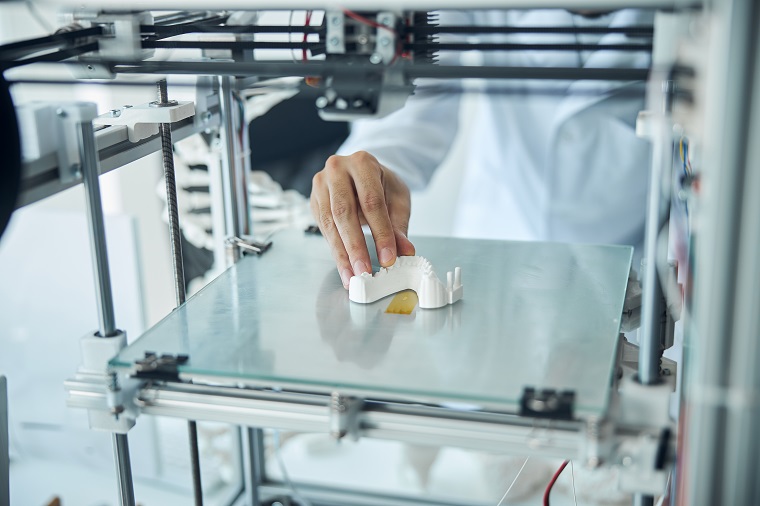
Additive manufacturing is not immune to the thread that binds a team or company together. A thread better known as ‘company culture.’ Each business has one, each one is different.
Since 1983, when Charles (Chuck) Hall created the first 3D printer, an industry has exploded in advanced and additive manufacturing. We can see today that 3D printing is revolutionizing significant sectors such as the automotive, aerospace, or medical industries. It is clear that we have come a long way from that first printer prototype. With this growth, came a myriad of new businesses and organisations that have taken the technology and transformed it, in a global effort to charge forward industry 4.0 technologies.
Start-ups emerging in the industry, whether first-time businesses or part of a more experienced portfolio, all have one thing in common to kick-start their growth in the market: defining a strong company culture. It’s an element that is vital to the continued success of a new business idea, especially when it comes to securing the right team to propel the organisation forward.
This caused us at Alexander Daniels Global to question: “What makes great Additive Manufacturing company culture?” We put our heads together and identified what we consider to be the ‘3 Key Indicators of Great Company Culture’ specific to Additive Manufacturing. Read on to learn more:
A strong combination of academia and industry
Coming in at number 1, we considered that businesses within 3D-Printing which have successfully grown, have demonstrated a strong combination of academia and industry. By this we mean the businesses favour both strong knowledge of additive manufacturing processes and business acumen. They value employees that demonstrate a high level of specialized education and/or experience within AM, but equally recognise those who are entrepreneurial and contribute to the business efforts.
For a company to excel within additive manufacturing, there must be a level of respect and appreciation for all disciplines that contribute to the growth of the company. When this is understood and implemented, you have the fine beginnings for a great additive manufacturing company culture.
Realism about the technology
With additive manufacturing and 3D printing being such an adolescent industry and technology, respectively, it is important for businesses within AM to recognise the limitations that creates. Being realistic about what the technologies, and therefore employees, are able to achieve can go a long way to creating a great company culture.
It isn’t reasonable to expect the next industrial and technological leap to come from your warehouse tomorrow. Maybe with time, sure, but as with most things it is important to walk before you run. As such, companies that celebrate the small successes, that set realistic targets and recognise innovation and the strengths of their employees, are much more likely to see greater satisfaction in the workplace. In turn, when you create a great work environment by understanding these principles, you will start to see an increased level of employee retention. With employees staying on for longer periods of time, you may even have the chance to nurture the next technological break-through.
An adaptable approach leading to innovation
For our final key indicator, we want to present a real-life example of a company that was adaptable and therefore able to pursue an innovative, albeit obscure, project that led to recognition and revenue (two very important R’s). We’re talking about HP teaming up with Cobra Golf and Parmatech to launch the first 3D printed golf putters using HP’s metal jet technology. HP has been better known for their contribution to R&D since the launch of their 3D Printing and Digital Manufacturing Centre of Excellence in 2019. However, this didn’t stop them from being adaptable with their technologies to pursue a collaboration with Cobra Golf.
HP recognised the benefits of making this business and manufacturing decision, that strayed slightly from their usual work. They took a creative leap and gained new ground on the capabilities of 3D printing. Their adaptable approach led to innovation.
It is always admirable that a company believes in the work they do, but it should not be a trait of a business to allow it to stunt development and advancement.
To Conclude
In summary, at Alexander Daniels Global we speak to candidates daily that have entered the industry, who are led by a passion, drive, or conviction about the technology and/or its potential. We believe that for companies within the additive manufacturing value chain to really see the full potential of their employees, they need to focus on creating a work environment with our 3 key indicators somewhere in its core. Great company culture in additive manufacturing is fostered when employees are recognised, held accountable and given the scope to creatively problem solve. Most likely they joined your business because they love what you do and how you do it. Let’s aim to keep it that way.
If you wish to discuss any of the details within this article, don’t hesitate to get in touch.
 Sophie Pontoppidan
Sophie Pontoppidan
Digital Marketing Executive
ALEXANDER DANIELS GLOBAL
sophie.pontoppidan@alexanderdanielsglobal.com
Subscribe to Our Email Newsletter
Stay up-to-date on all the latest news from the 3D printing industry and receive information and offers from third party vendors.
You May Also Like
Further Understanding of 3D Printing Design at ADDITIV Design World
ADDITIV is back once again! This time, the virtual platform for additive manufacturing will be holding the first-ever edition of ADDITIV Design World on May 23rd from 9:00 AM –...
3D Printer Maker EVO-tech Reborn as NEVO3D — Once More With Feeling
EVO-tech was a 3D printing service and original equipment manufacturer established in 2013 and based in Schörfling am Attersee, Austria. The company produced high-quality material extrusion systems featuring linear bearings,...
3D Systems Brings 3D Printed PEEK Cranial Implant to the U.S. with FDA Clearance
For more than 10 years, 3D Systems (NYSE:DDD) has worked hand-in-hand with surgeons to plan over 150,000 patient-specific cases, and develop more than two million instruments and implants from its...
CDFAM Returns to Berlin for Second Annual Symposium
The second CDFAM Computational Design Symposium is scheduled for May 7-8, 2024, in Berlin, and will convene leading experts in computational design across all scales. Building upon the first event...

































